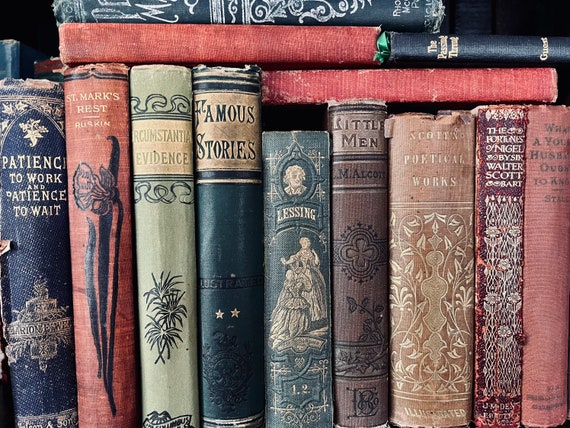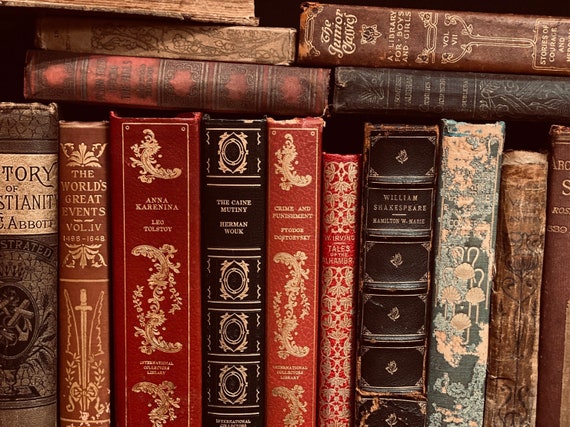Antique books are more than just vessels of knowledge; they provide a unique touch of history and elegance to any space. In this comprehensive guide, we will explore how to incorporate these timeless treasures into your home decor, share personal anecdotes, and offer tips based on years of experience. Whether you’re a seasoned collector or a newcomer, you’ll find valuable insights here.
Understanding Antique Books
Before we dive into decoration tips, let’s clarify what makes a book “antique.” Generally, books that are 100 years or older are considered antiques. They not only have aesthetic value but also a rich history that can serve as a conversation starter.
The Allure of Antique Books
- Unique Aesthetic: Each book has its own character, from worn spines to illustrated covers.
- Historical Significance: Many antique books contain stories that reflect the time period they were published in.
- Craftsmanship: Antique books often feature exquisite binding and typography that modern books lack.

Why Use Antique Books for Decoration?
Incorporating antique books into your decor provides numerous benefits:

1. Aesthetic Appeal
Antique books can provide a rich visual texture that can enhance both minimalist and ornate designs. Their varied colors, textures, and designs create a layered, interesting look.

2. Personal Touch
Displaying books that resonate with your interests or that you’ve collected over time can make your space feel more personalized and homey.

3. Eco-Friendly Decor
Using antique books is a sustainable choice. It helps reduce waste and relies on existing resources rather than new productions.

Creative Ways to Decorate with Antique Books
Now that we’ve established why antique books are beneficial, let’s explore some innovative ideas to incorporate them into your home decor.

1. Bookshelves with Character
Utilize bookshelves to display your antique books in a visually striking manner. Consider organizing them in:
- Color Coordination: Arrange by spine color for a vibrant look.
- Size Variation: Cluster larger books with smaller ones for visual balance.
Example Comparison Table of Book Arrangement Styles
| Arrangement Style | Pros | Cons |
|---|---|---|
| Color Coordination | Visually appealing, cohesive look | Can be difficult to find specific books |
| Size Variation | Creates dynamic visual interest | May appear cluttered if not done carefully |
| Vertical and Horizontal Stacking | Maximizes shelf space | Can be less stable if not balanced |
2. Coffee Tables and Side Tables
Stacking antique books on coffee tables or side tables can create an inviting atmosphere. Add a decorative item on top, like a candle or a small plant, for an added flair.
Tips for Stacking Books
- Use books of varying heights for visual interest.
- Mix in decorative items to break up the “book look.”
3. Bookends as Art
Utilize antique books as bookends themselves. Choose books with colorful spines or unique covers to add a pop of personality to your shelves.
4. Frame Pages or Covers
Consider framing pages or covers of your favorite antique books. This can transform literary art into wall decor, providing a unique focal point.
Where to Find Antique Books
Now that you’re inspired to decorate, you might be wondering where to find these treasures. Here are several places to search:
1. Antique Stores
These shops often have a curated collection of antique books. Spend some time browsing and you may just find a hidden gem.
2. Estate Sales
Estate sales can be a goldmine for antique book lovers. Often, you can find collections that have sentimental value and unique stories behind them.
3. Online Marketplaces
Websites like eBay, Etsy, and AbeBooks feature sellers who offer antique books. Be sure to read descriptions carefully and check for authenticity.
Maintaining the Beauty of Antique Books
Once you’ve acquired your antique books, you’ll want to ensure they remain in good condition. Here are some tips:
1. Proper Storage
Store books upright, away from direct sunlight, humidity, and extreme temperatures to maintain their condition.
2. Gentle Cleaning
Use a soft, dry cloth to dust off books gently. Avoid water or cleaning agents as they can damage the materials.
3. Handle with Care
When using antique books for decor, handle them carefully to avoid spine damage or tearing pages.
Pros and Cons of Using Antique Books in Decor
Pros
- Unique character and charm.
- Historical significance.
- Versatile decoration options.
- Sustainable and eco-friendly choice.
Cons
- Potential fragility.
- Can be more expensive than modern books.
- Finding specific items may take time.
FAQs About Antique Books for Decoration
What types of antique books are best for decoration?
Look for books with visually appealing covers, unique designs, and rich colors. Illustrated books or those with ornate bindings often make the best decorative pieces.
How do I valuate antique books for purchase?
Factors include age, rarity, condition, and demand. Consulting a professional appraiser or doing market research can provide insight into a book’s value.
Can I mix antique books with modern decor?
Absolutely! Mixing styles can create a unique and eclectic space. The key is to find a balance that feels cohesive.
How can I source antique books on a budget?
Explore thrift stores, garage sales, and local flea markets for budget-friendly options. Online auctions can also provide deals on antique books.
Conclusion: Curating Your Personal Library
Incorporating antique books into your home decor is a fulfilling way to merge aesthetics with history. Their stories can enrich your living space and contribute to a warm, inviting atmosphere. With the right care and placement, antique books can become beloved features in your home, showcasing your personality and taste.
So, whether you’re hunting for that perfect vintage edition or looking to display your current collection in a new light, let the charm of antique books inspire your decor journey. Happy decorating!